FIFA World Cup 2014: Brazilian World Cup host stadia
Brazil has built, redeveloped and improved the 12 stadiums which will host the FIFA World Cup 2014.
Here, as the competition gets underway Breaking Travel News takes a tour of the venues which will welcome nearly three million fans over the coming weeks.
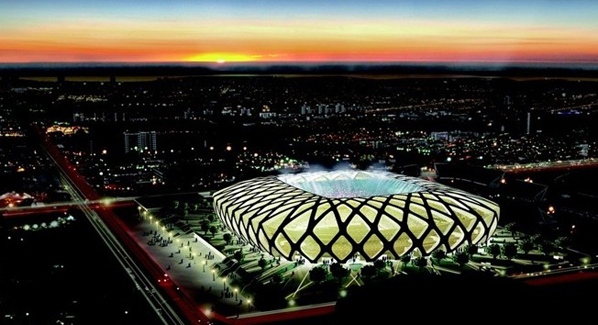
Arena Amazonia, Manaus
Though not a traditional hotbed of Brazilian football, Manaus is sure to be popular with fans attending the 2014 FIFA World Cup Brazil thanks to the unique character of the Arena Amazonia, formerly the Estadio Vivaldao.
The city is situated at the heart of the Amazon rainforest, the largest tropical rainforest in the world and the inspiration for the refurbished stadium, which will be enclosed by a metal structure designed to resemble a straw basket, a product the region is famous for.
This sustainable stadium project will provide an important legacy for the region and play its part in helping to preserve the diversity of the Amazonian rainforest.
For example, rainwater will be collected for its subsequent use in toilets or to water the pitch, while the region’s abundant supply of sunshine will be harnessed to generate clean and renewable energy.
Plant screens will also be created to keep energy costs down and, above all, to control temperatures inside the stadiums.
As well as seating for 39,118 spectators, the Arena Amazonia will feature restaurants and underground parking and will be served by dedicated bus and monorail services.
The venue for four group-phase matches at Brazil 2014 - including visits from England, Italy and Croatia - the stadium will continue to attract tourists after the tournament by hosting concerts and cultural events.
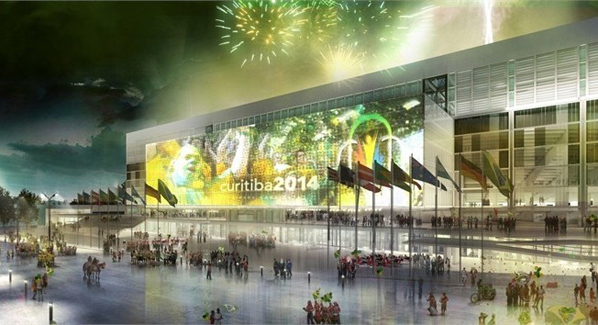
Arena da Baixada, Curitiba
Ever since renovation works were completed in June 1999, the historic Estadio Joaquim Americo – better known as the Arena da Baixada – has been considered one of Brazil’s most modern and best-appointed stadiums.
It came as no surprise, therefore, that the home ground of Atletico Paranaense, which was originally constructed back in 1914, was among those venues chosen to host games at the 2014 FIFA World Cup.
Prior to welcoming the global showpiece, however, the Curitiba stadium underwent another set of renovation works.
Included in this process are a series of improvements in facilities and the addition of rows of extra seats parallel to the pitch.
This will result in an increased capacity of 38,533, with the stadium set to welcome four matches at Brazil 2014. This will include games featuring Nigeria, Honduras and Spain.
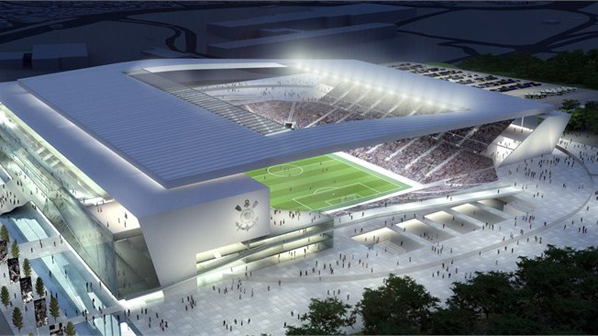
Arena de Sao Paulo, Sao Paulo
Of the three biggest clubs in Sao Paulo, the only one which previously did not own a stadium with the necessary size and infrastructure to host games was the city’s best-supported side: Sport Club Corinthians Paulista.
Yet this long-yearned for dream of the Corinthians faithful will finally come true ahead of the 2014 FIFA World Cup in the shape of the Arena de Sao Paulo.
Under construction in the neighbourhood of Itaquera, which is in the city’s Eastern Zone and a traditional Corintianos stronghold, the project was completed earlier this year.
The stadium works also boosted development in the Eastern Zone, which is one of Sao Paulo’s most deprived areas and home to nearly four million people, as well as ensuring hundreds of workers gain professional qualifications.
A total of close to 6,000 people were employed either directly or indirectly over the course of the construction process.
The Arena de Sao Paulo has been chosen to host the Opening Match of Brazil 2014, when the host will takes on Croatia, and will also welcome five other encounters, including one semi-final.
Its capacity will be 61,606.
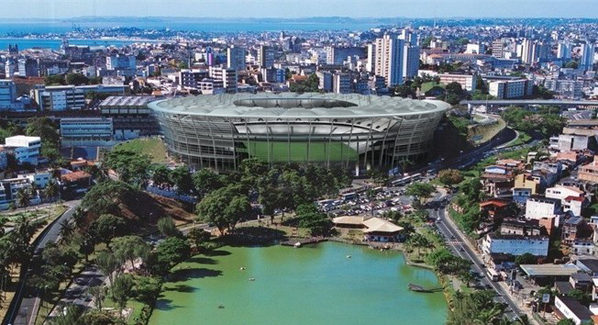
Arena Fonte Nova, Salvador
The first capital city in Brazil’s history, Salvador will welcome the 2014 FIFA World Cup Brazil at a new, purpose-built stadium with a capacity of 51,708.
The new arena will host six games – including Spain vs. The Netherlands on June 13th - at the tournament and has been constructed on the site of the Fonte Nova.
Officially known as the Estadio Octavio Mangabeira, the Fonte Nova was opened on January 28th 1951 and was the venue for many a derby between Salavador’s Esporte Clube Bahia and Esporte Clube Vitoria.
It was closed in November 2007 and subsequently demolished three years later.
The stadium that has risen in its place, the Arena Fonte Nova, has been modelled on its predecessor and is covered by a lightweight, metal roof.
A public-private joint venture, the complex houses a panoramic restaurant, museum of football, car parks, shops, hotels and a concert hall.
Maintaining the proud tradition of the Fonte Nova, the new stadium will host four group matches, three of them featuring top-seeded teams, as well as a Round-of-16 match and a quarter-final tie.
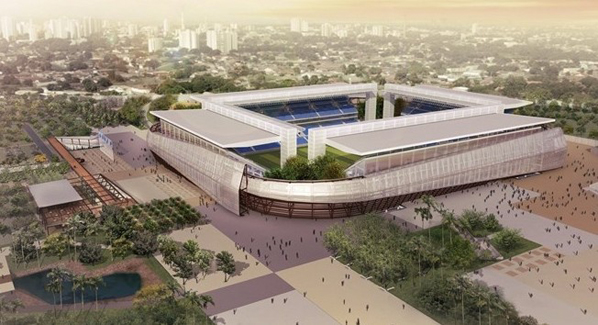
Arena Pantanal, Cuiaba
Given that the stadium in Cuiaba set to host matches at the 2014 FIFA World Cup neighbours the flora- and fauna-rich region that is the Pantanal, it is no surprise that sustainability has been a central theme of the construction and maintenance of the new arena from the project’s very beginning.
This sustainable approach has been applied to every detail along the way, with the wood used in the construction coming from certified sources and the waste and rubbish produced being recycled – thus enabling them to be reused within the building project and its access routes.
The site’s air and soil quality is also constantly monitored, all of which means the stadium’s nickname of ‘O Verdão’ (The Big Green) is particularly appropriate.
Specially built for Brazil 2014 – when it will host four matches – the Arena Pantanal will boast a capacity of 39,859 and will occupy the site where the Estadio Jose Fragelli used to be.
This multi-purpose stadium will have an adaptable structure, which can be reduced in size once Brazil 2014 is over.
The covered arena is thus an ideal setting to host a variety of events such as shows, exhibitions and trade fairs, while local clubs such as Mixto and Operario may also take advantage of the new venue.
Chile will take on Australia in the first match in the stadium on June 13th.
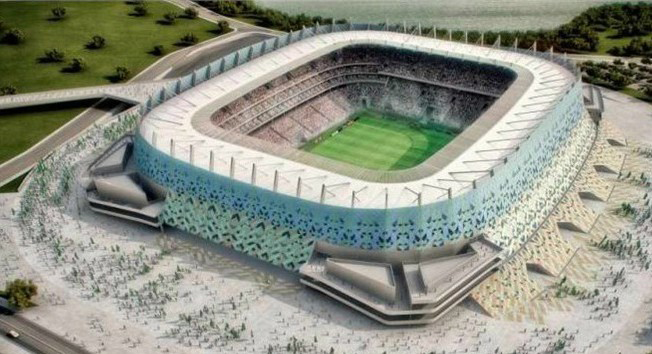
Arena Pernambuco, Recife
Recife, a city whose passion for the beautiful game is without question, is home to three historic Brazilian clubs in the shape of Nautico, Santa Cruz and Sport.
And, having already hosted one match at the 1950 FIFA World Cup Brazil (Chile’s 5-2 win over USA at the Ilha do Retiro stadium), the city has gained a brand-new arena in time to host five matches at Brazil 2014.
The Arena Pernambuco, which is part of a complex also featuring restaurants, shopping centres and cinemas, is located in Sao Lourenco da Mata in Recife’s metropolitan zone, just 19km away from Guararapes International Airport.
The project is seen as an economic catalyst for the continued expansion of Grande Recife, within an area which is considered to be economically deprived.
It is also estimated that the area will expand into a neighbourhood including nearly 5,000 homes.
With room for 42,583 spectators and constructed by means of a partnership between the public and private sector, the Arena Pernambuco now hosts Nautico’s games – following the agreement reached with the club in October 2011.
Italy will take on Costa Rica in the stadium on June 20th in one of its most anticipated games.
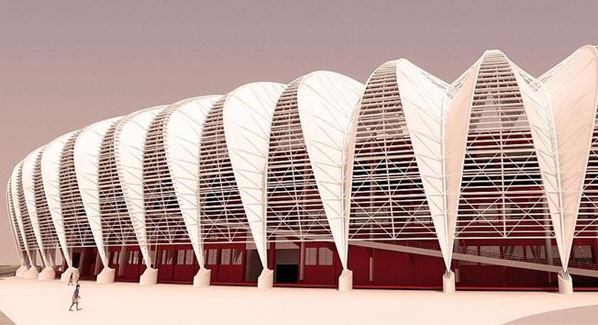
Estadio Beira-Rio, Porto Alegre
Located in a picture-postcard setting, on reclaimed land on the banks of the River Guaiba, the Estadio Beira-Rio is the home of Internacional, arch-rivals to their Porto Alegre neighbours Gremio.
The venue of many a thrilling city derby and no fewer than four Copa Libertadores finals, the stadium is now preparing to host five games at the 2014 FIFA World Cup Brazil, among them a Round-of-16 tie.
The largest football ground in the south of Brazil and nicknamed the “Gigante do Beira-Rio” (The Giant of Beira-Rio), the stadium is officially known as the Estadio Jose Pinheiro Borda and was opened in 1969.
It had taken nearly a decade to build, with Inter fans lending a helping hand in its construction by donating bricks, cement and iron.
So anxious were some supporters to see the ground built that they would even leave games at the club’s existing ground, Estadio dos Eucaliptos, whenever the team was losing and head to the Beira-Rio to cheer the builders on.
The cost of revamping the stadium is being met by the club itself through the programme “Gigante para Sempre” (A Giant for all time).
The main feature of the project is the installation of an innovative metal roof to cover the stands, ramps and turnstile areas.
The construction project has been divided into different phases, the idea being to enable its continued use during its refurbishment, at the end of which the Beira-Rio will have a capacity of 42,991.
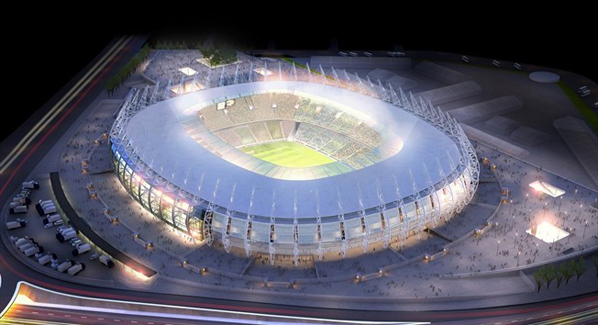
Estadio Castelao, Fortaleza
The people of Fortaleza have a passion for the game as well as the city’s two biggest clubs, Ceara and Fortaleza.
And it is an attachment that can only grow with the remodelling of the city’s main football stadium, the Castelao.
Built in 1973 and officially known as the Estadio Governador Placido Castelo, the Castelao is home to both teams and has been entirely renovated to host matches at the FIFA Confederations Cup Brazil 2013 and the 2014 FIFA World Cup Brazil.
As well as having its capacity increased to 60,348, the revamped stadium will boast an underground car park with 1,900 spaces, executive boxes, a VIP area, media centre, mixed zone and fully refurbished dressing rooms.
In addition, a new roof now covers all its tiers, including the pitchside ring of seating.
Access to the Castelao has also been upgraded, with the creation of four exclusive bus lanes, an LRV (light rail vehicle) line and two metro stations, making it far easier for fans to reach the stadium and the complex it will form part of, which will house restaurants, cinemas, a hotel and an Olympic centre.
The Castelao is the venue for A Seleção’s second group match at Brazil 2014.
The support the home favourites receive is sure to be every bit as fervent as it was when they ran out there for a March 2002 friendly against Yugoslavia, the game that marked Ronaldo’s long-awaited return to action in the build-up to Brazil’s triumph at the 2002 FIFA World Cup Korea/Japan.
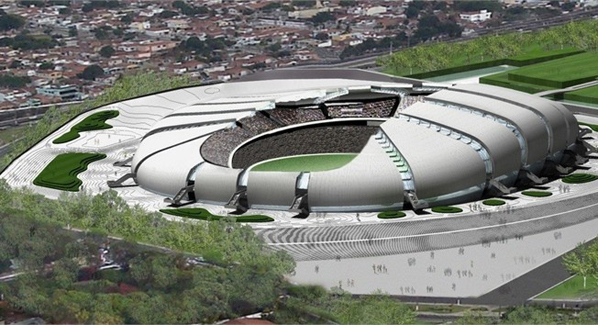
Estadio das Dunas, Natal
Ever since it was inaugurated back in 1972, the Estadio Joao Claudio de Vasconcelos Machado – better known as the Machadão – has welcomed the biggest clashes in Natal football to the Lagoa Nova neighbourhood.
The three leading teams in Natal, the capital of Rio Grande do Norte state, are ABC, Alecrim and America, who last appeared in Brazil’s top flight – Serie A – in 1985, 1986 and 2007 respectively.
However, in order for Natal to become one of the 12 Host Cities at the 2014 FIFA World Cup, a bigger and more modern venue was required.
The solution settled upon was to completely demolish both the Machadão and the neighbouring Humberto Nesi sports hall, known as the Machadinho.
Rising up on the site is the Estadio das Dunas stadium project, with its name relating to the sand dunes that are one of the most impressive natural attractions in the Natal region.
Nor do the similarities end there, with the stadium’s daring undulating structure designed to imitate said dunes.
Its capacity will be 38,958.

Estadio Mineirao, Belo Horizonte
One of the most historic venues in Brazilian football and called home by Atletico Mineiro and Cruzeiro, both former national champions, the 58,259 capacity Estadio Mineirao has undergone a complete overhaul prior to hosting six matches at the 2014 FIFA World Cup - including one semi-final.
The modernisation project included the lowering of the pitch surface and improving stadium accessibility, among other issues, with sustainability principles at the core of all work carried out.
Exemplifying this approach is the facility to capture and store up to 6,270,000 litres of rainwater, which can then be reused.
Located in the Pampulha neighbourhood of Belo Horizonte and inaugurated on December 5th 1965, the stadium belongs to the Minas Gerais state government.
Going by the official name of the Estadio Governador Magalhaes Pinto, in footballing circles it is almost universally known as the Mineirão.
Boasting an enthusiastic and vibrant atmosphere on match days, whether it be O Galo (Atletico Mineiro) or A Raposa (Cruzeiro) that are playing at home, the Mineirão has also proved a worthy setting for Brazilian national team matches – including A Seleção’s clashes with arch-rivals Argentina in FIFA World Cup qualifying encounters in 2004 and 2008.
What is more, the stadium has been regularly graced over the years by attacking legends such as Ronaldo, Tostao, Reinaldo and Dario.
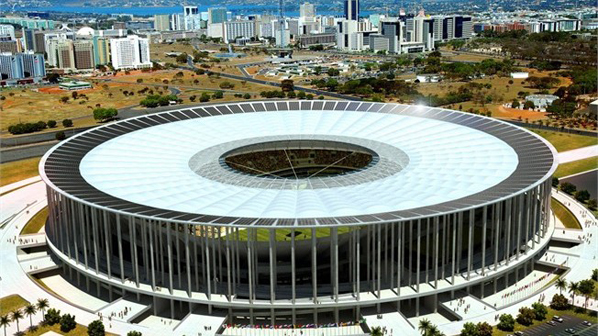
Estadio Nacional de Brasilia, Brasilia
Few Brazilian cities can match the capital Brasilia when it comes to architecture, and the imposing Estadio Nacional Mane Garrincha is a reflection of that, an arena with seating for 69,432 spectators, making it the second largest of the stadiums hosting matches at the 2014 FIFA World Cup Brazil.
The city’s Estadio Nacional has been all but demolished to make way for the stadium, which boasts a new facade, metal roof and stands, as well as a lowered pitch enabling unobstructed views from every seat.
Founded on carbon neutrality, recycling and complete access via public transport, this environmentally friendly construction project consolidates Brasilia’s status as a world leader in sustainable urban planning, creating a valuable legacy for other sectors of the local economy.
The Estadio Nacional will host the Opening Match at the FIFA Confederations Cup Brazil 2013 and seven games at the 2014 FIFA World Cup Brazil, one of them a quarter-final tie.
The stadium will be Brasilia’s third, along with the Serejao, the home of Brasiliense, and the Bezerrao, which was recently refurbished and reopened in 2008.
Following the world finals the arena will be used to host concerts and major cultural events.
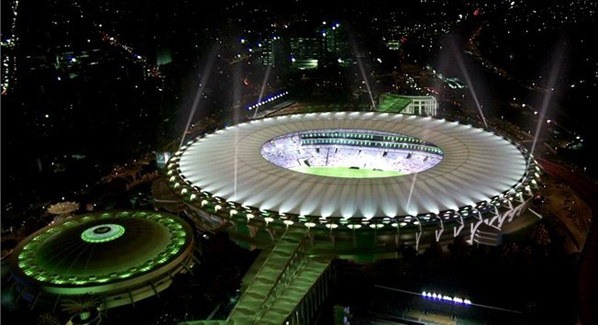
Estadio Do Maracana, Rio de Janeiro
Built for the 1950 FIFA World Cup Brazil, the Estadio Jornalista Mario Filho, better known as the Maracana, provided the venue for that year’s truly memorable decider between the host nation and Uruguay, one of the most dramatic chapters in the history of the competition.
The Rio de Janeiro stadium will be in the limelight once again at Brazil 2014, hosting seven games in all, more than any other venue.
Among those matches will be the Final on July 13th.
Once the largest stadium in the world, packing in crowds of up to 200,000 – among the highest attendances ever seen in the history of the game – the Maracana now has a reduced capacity of 74,698 for Brazil 2014.
It remains, nevertheless, the country’s biggest football ground.
Respecting the original layout of the stadium, the project for its refurbishment included the demolition of the lower ring of seats, the construction of a new ring offering improved visibility, the expansion of the access ramps and the replacement of all seating.
The stadium has also been fitted with a new roof complete with a rainwater collection system.
The facade, which has been listed by the National Institute of Historical and Artistic Heritage, remains untouched.
Rio’s second most popular tourist attraction, the Maracana continued to attract football fans from all over the world, even as it underwent renovation.
Visitors to the stadium could watch work unfold from the Torre de Vidro (Glass Tower), built especially for the occasion, and could even take a piece of the old stadium away with them as a souvenir.

